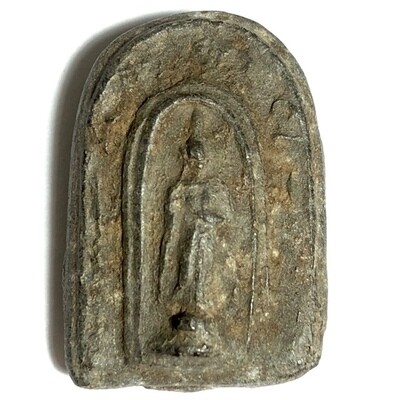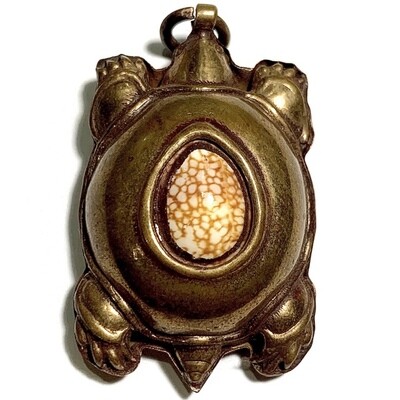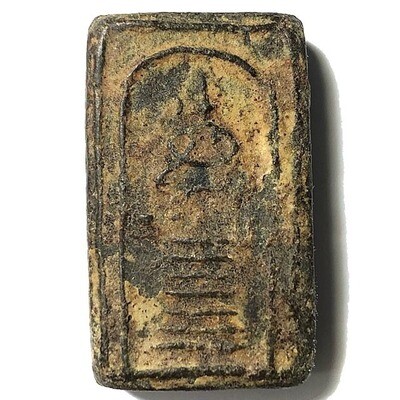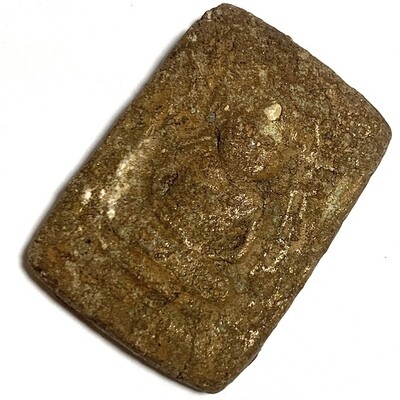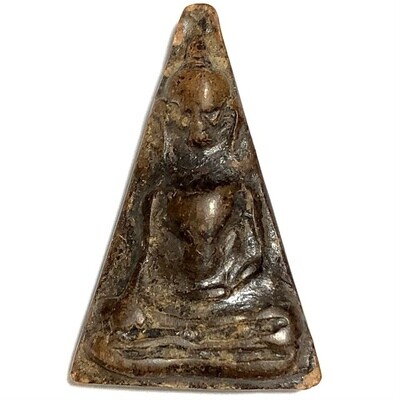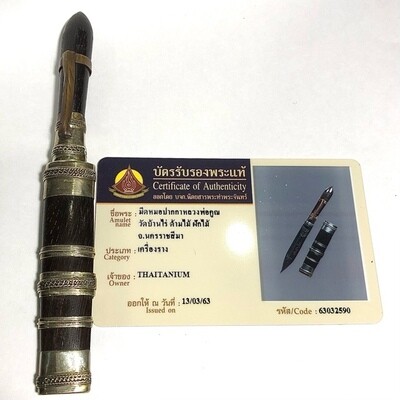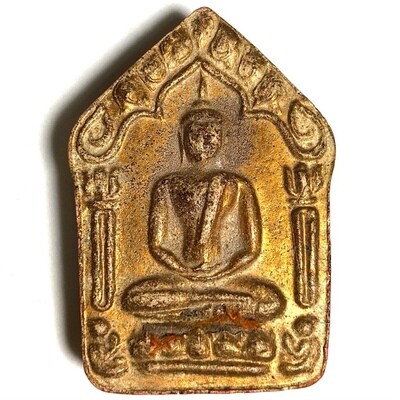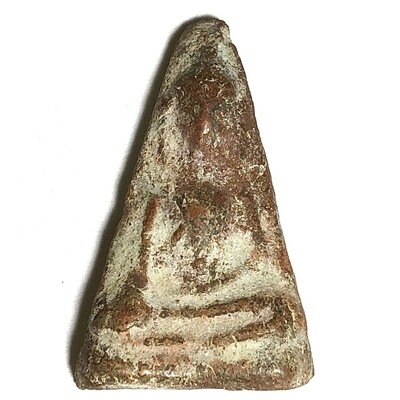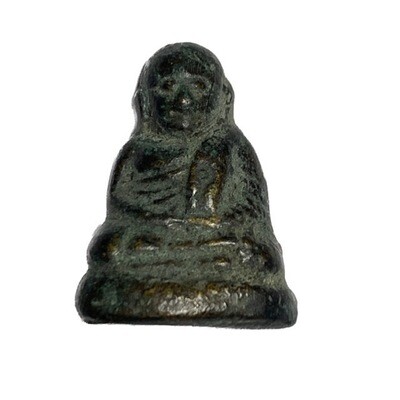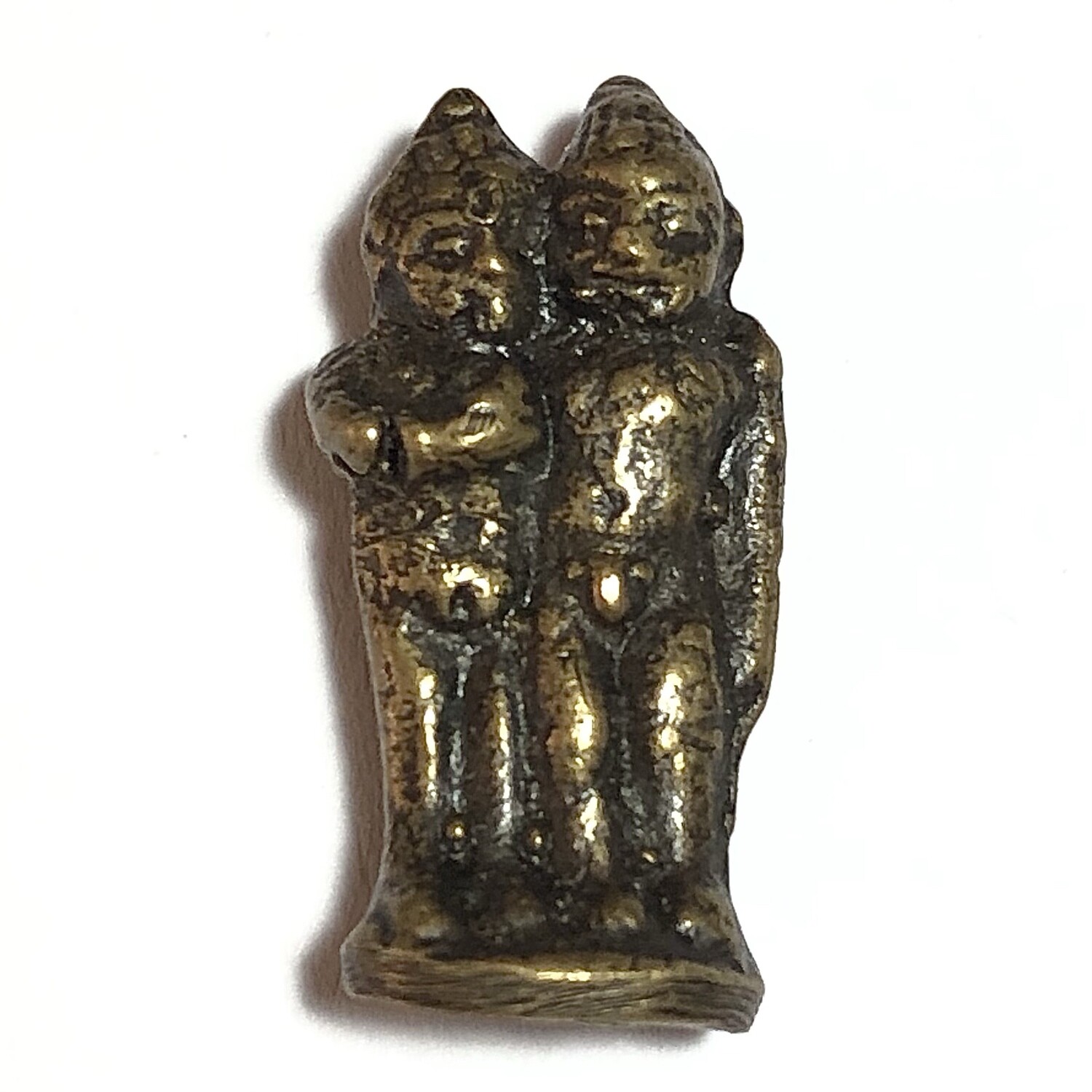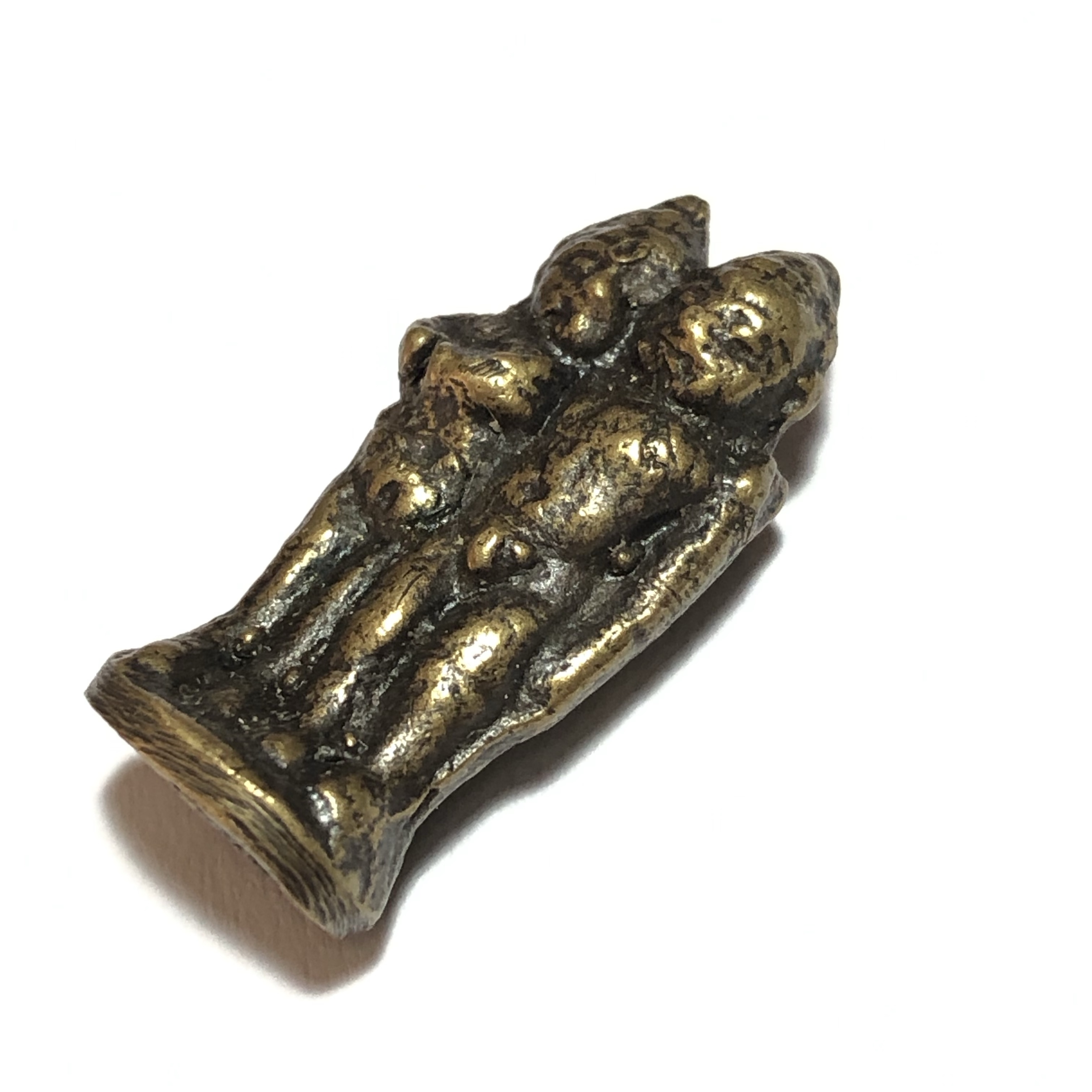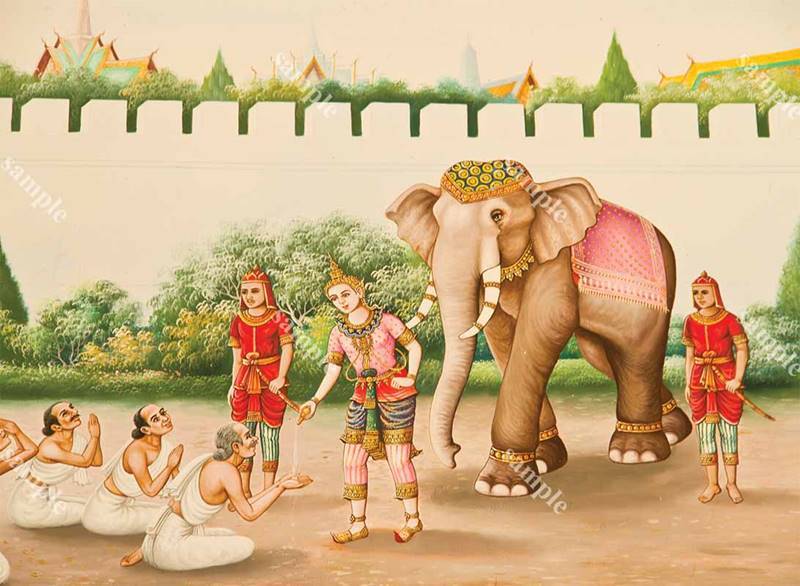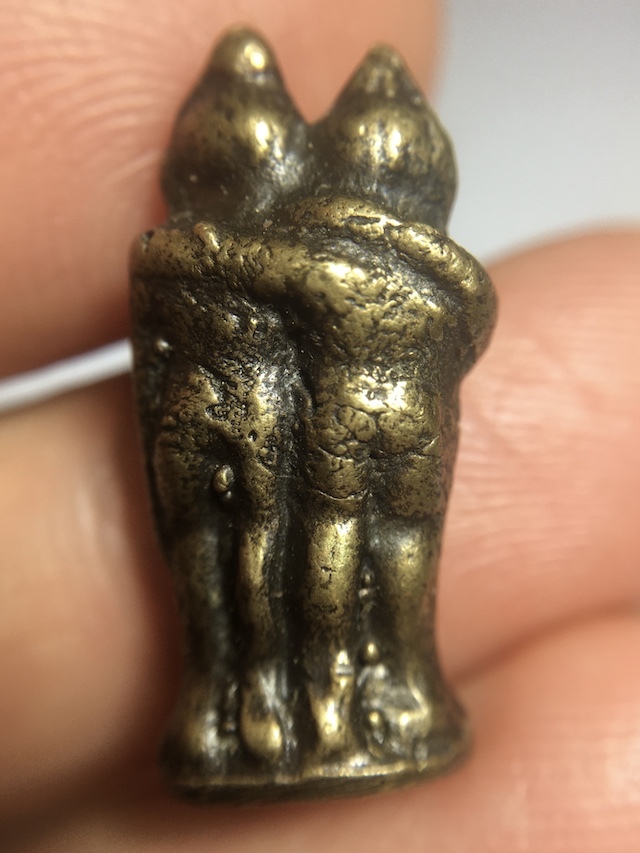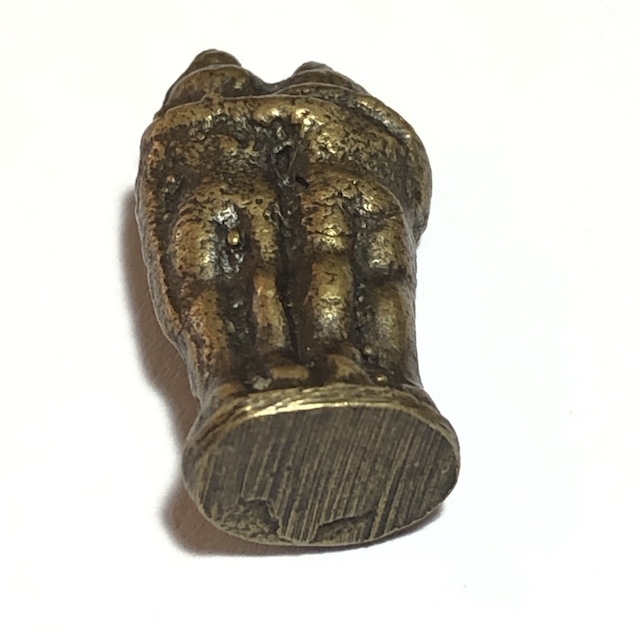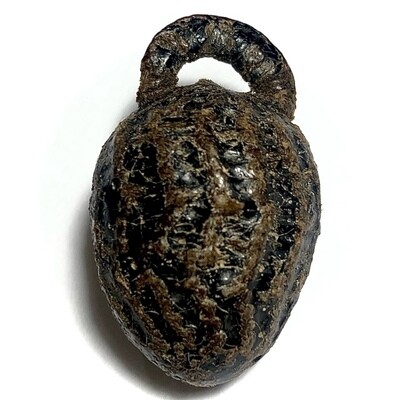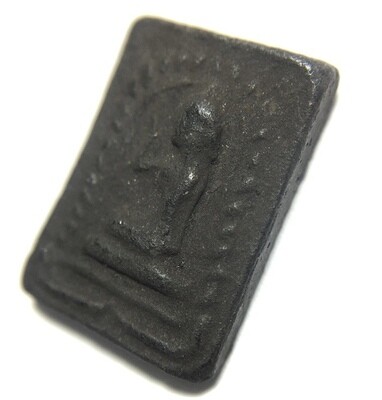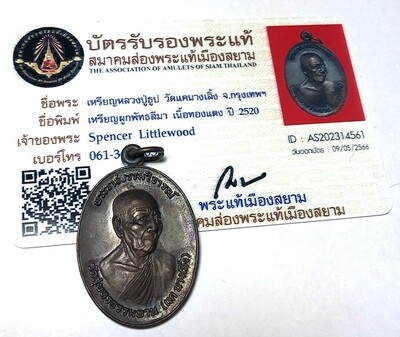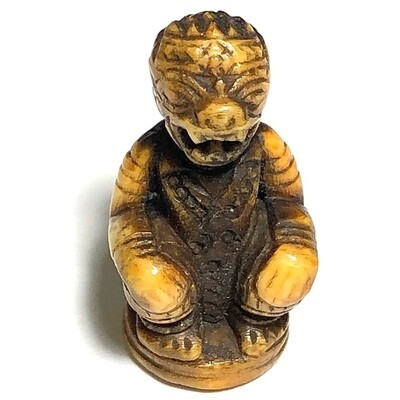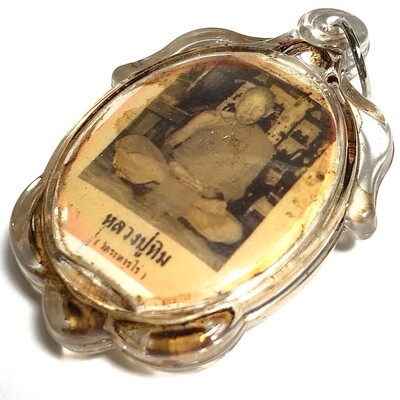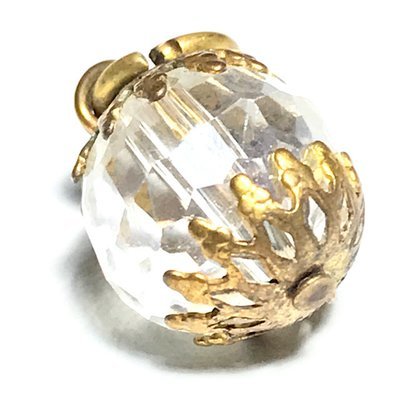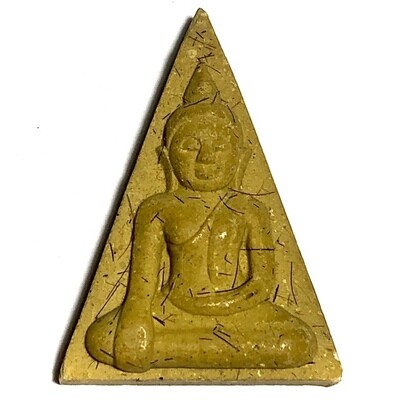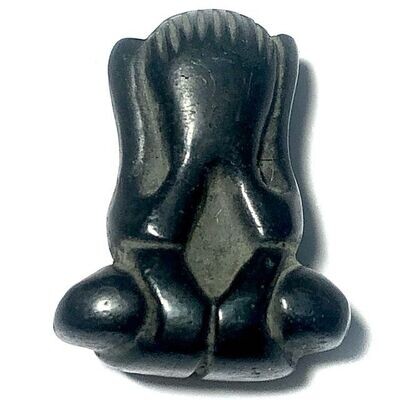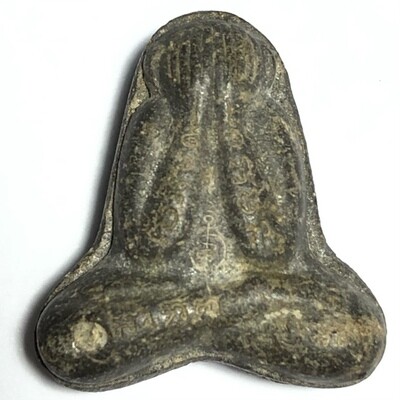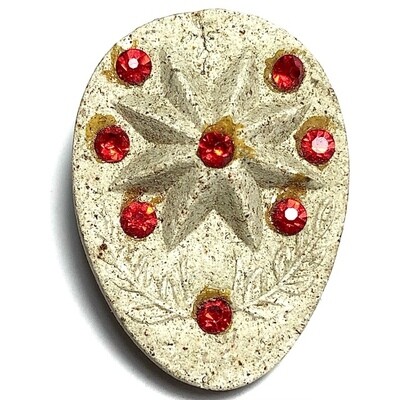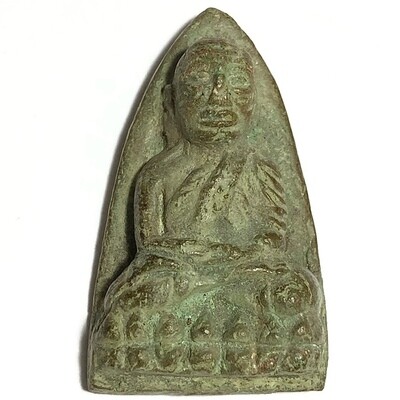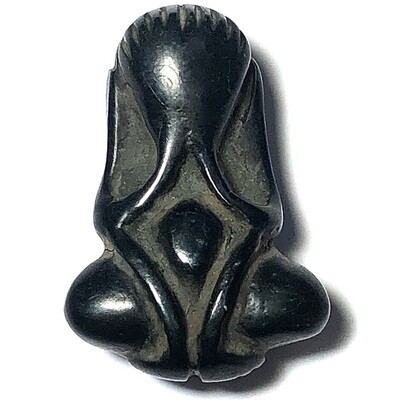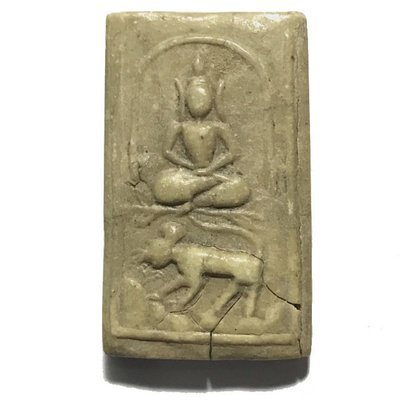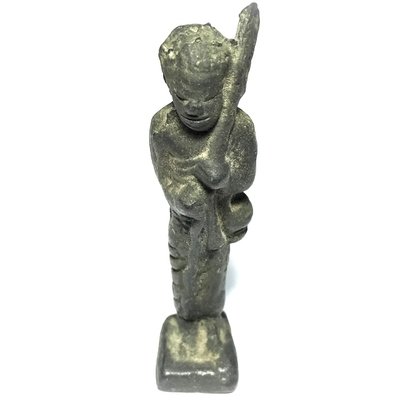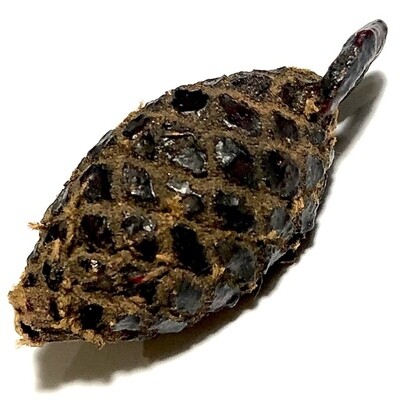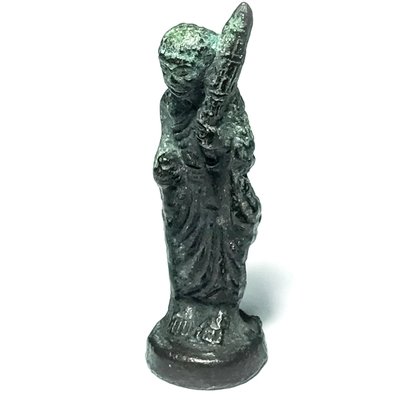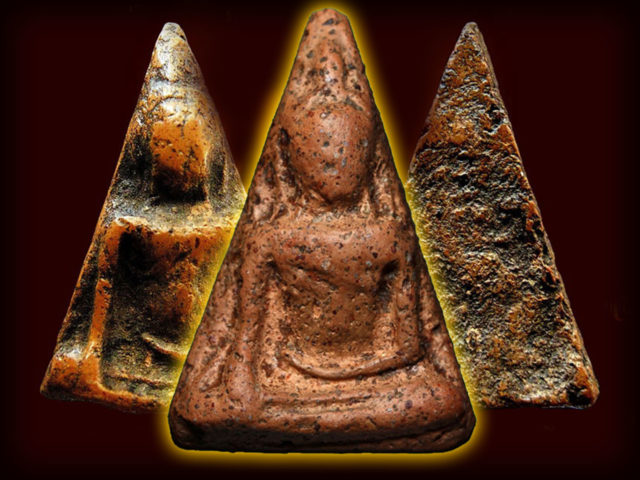
The Legend of Pra Nang Paya Amulet
Pra Nang Paya Benjapakee Amulet
Pra Nang Paya, or ‘Pra Pim Nang Paya, is an amulet from the Ayuttaya Period, which was artistically influenced in its design factors by the Artisans of the Sukhothai Periodic Style. As to the composition of the design of the Pra Nang Paya amulet, it can be said that it contains the work of the Sukhothai Artisan as its heritage, and is a Mark of Preservation of the Eight Periodic Buddhist Art styles found in Thai Sacred Arts and Amulets.
The Pra Nang Paya amulet was first discovered within the Chedi Stupa at Wat Nang Paya in Pitsanuloke, in the year 2444 BE, as King Julalongkorn Rama 5 was visiting Pitsanuloke, to be present for the casting of the Chinarat Replica Buddha at Wat Pra Sri Radtana Sasadaram. The King was invited to come and receive a large number of them as gifts (the best selected), and his Majesty then distributed them to the Government Officials and other Courtiers and Devotees. The remaining amulets, he took back to Bangkok. Apart from the ‘Serm Duang’ Horoscope Improving effects of this Purely Buddhist Amulet, the amulet is Famous for its Metta Mahaniyom, Klaew Klaad, Kong Grapan Chadtri, and Maha Lap powers.
The Pra Nang Paya Benjapakee amulet has 7 different Pim in total.
Pra Nang Paya Pim Khao Koeng.
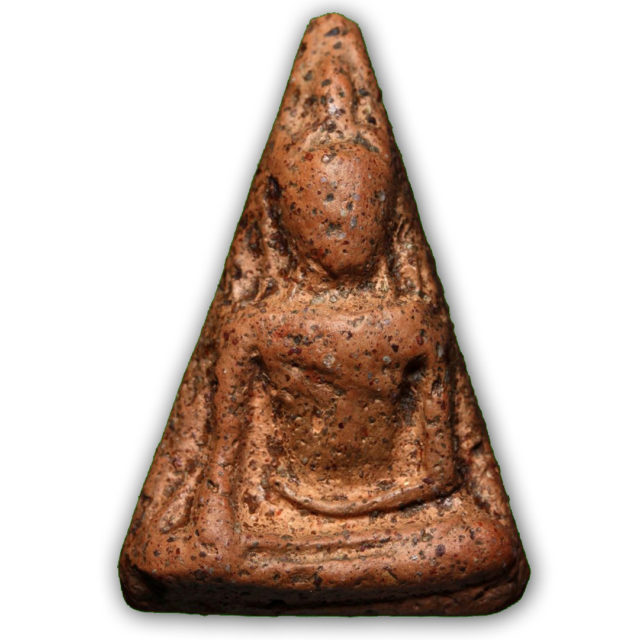
Pra Nang Paya Pitsanuloke Pim Khao Koeng Benjapakee Hiding Place Amulet
Pra Nang Paya Pim Khao Dtrong
(splits into two models; Khao Koeng Tammada, and Khao Koeng Mer Dtok Khaa).
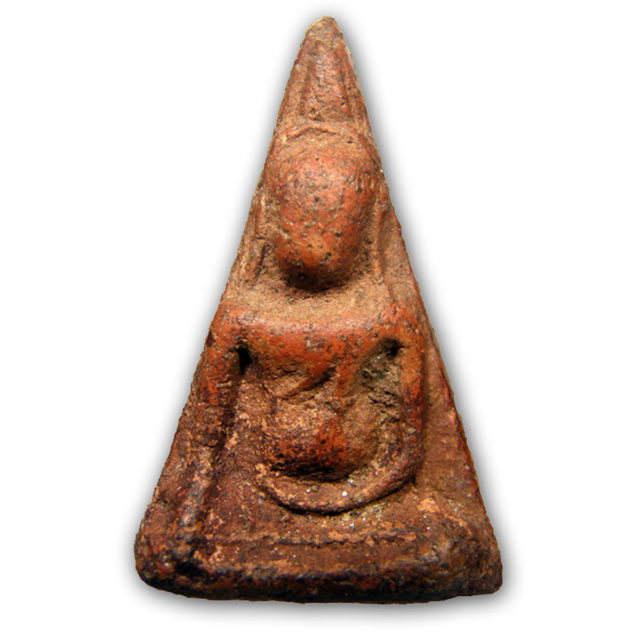
Pra Nang Paya Pitsanuloke Pim Khao Dtrong Benjapakee Amulet
Pra Nang Paya Pim Ok Noon Yai
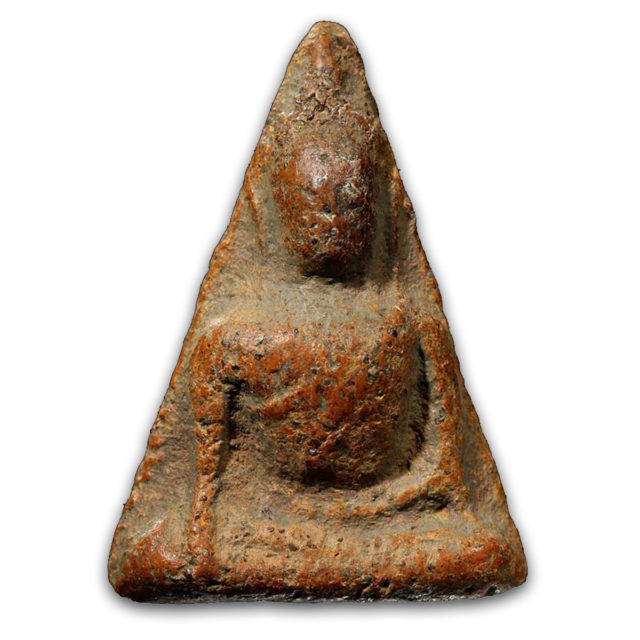
Pra Nang Paya Pim Ok Noon Yai Benjapakee Amulet – a Classic Pra Niyom Master Class Amulet
Pra Nang Paya Pim Ok Noon Lek.
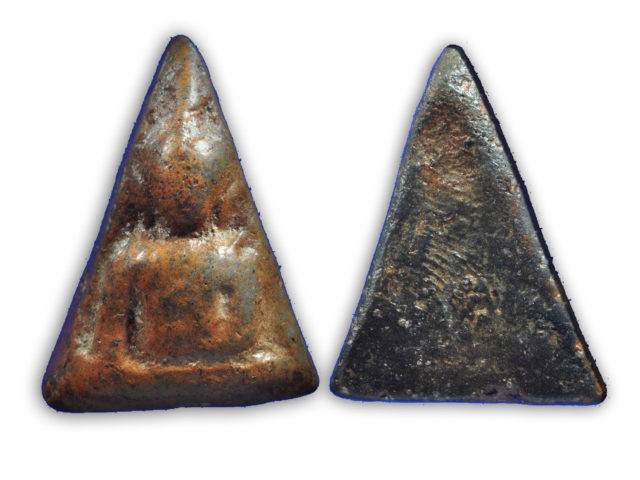
Pra Nang Paya Pitsanuloke Pim Ok Noon Lek Benjapakee Amulet of Historical Fame and Legend
Pra Nang Paya Pim Sangkati.
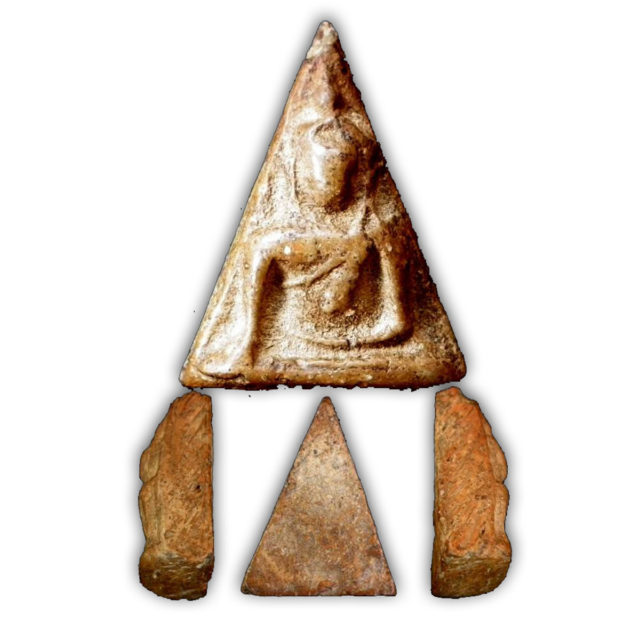
Pra Nang Paya Pitsanuloke Pim Sangkati Benjapakee Amulet – a very rare model to encounter from the seven Pim discovered in the Pitsanuloke Find
Pra Nang Paya Pim Ok Faeb also called ‘Pim Taewada’.
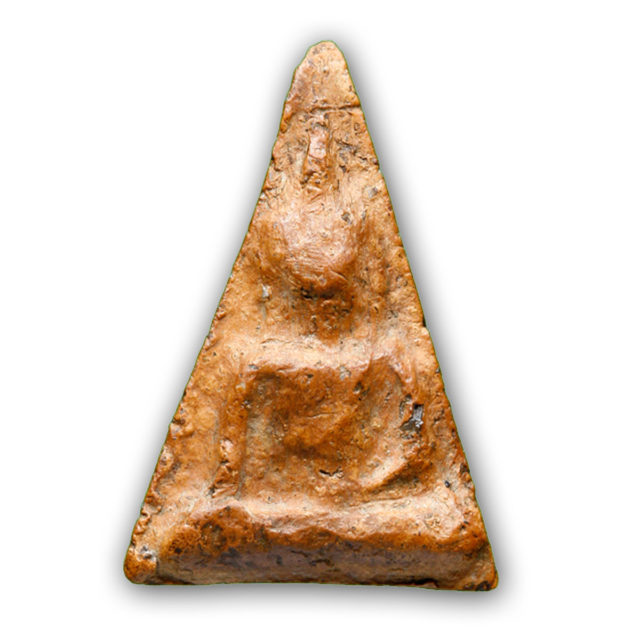
Pra Nang Paya Pim Tewada – a Classic Benjapakee Pra Niyom Master Class Amulet
Pra Nang Paya Pim Pised
(includes various amulets which do not fit in the above categories, such as the Khao Buang, or the Pim Yai Pised).
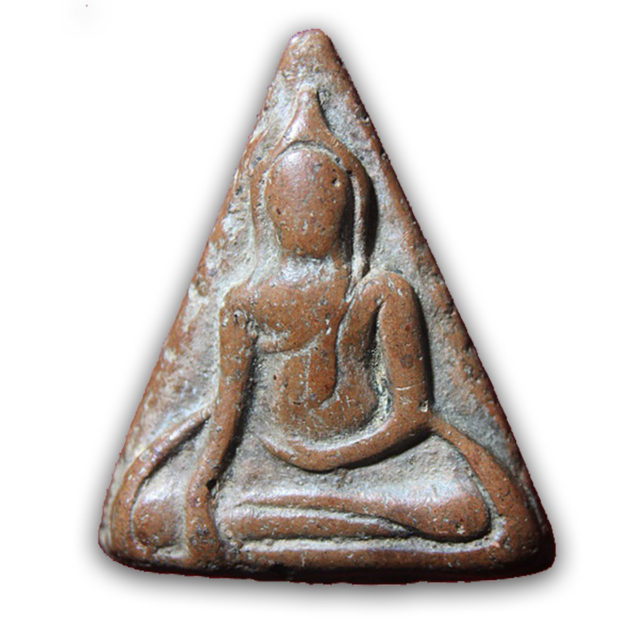
Pra Nang Paya Pim Pised Rare Special Model
Kanha Jali Pim Lek Hua Gleung Niyom 2491 Blessings by Luang Por Chaeng, Luang Por Jong, Luang Por Chuan, and Luang Por Phueak,
Kanha Jali Loi Ongk Sattuette,'Pim Hua Gleung Niyom' (preferred pointed head model), in smaller Pim Lek version, released 2491 BE with Blessings by Luang Por Chaeng, Luang Por Jong, Luang Por Chuan, and Luang Por Phueak, of Wat Molee. The Kanha-Jali amulet (Ganha-Chali), is in the form of Prince Jali and Princess Kanha as children, embracing each other shoulder to shoulder.
The image radiates the potent energy of Metta Maha Niyom Mercy Charm. Kanha and Jali were born to the Royal Prince Vessantara (a previous life of the Buddha), and their story, is to reveal the profound generosity and sacrifices made by the Buddha, on the path to enlightenment.This amulet, is usually catalogued within the pantheon of amulets of LP Chaeng, despite the collaborative ceremony.
The story of Prince Vessantara's last incarnation plays a significant role in the Wicha for this amulet, Thai Buddhism. In this tale, Jali and Kanha, were the son and daughter of Prince Vessantara and Queen Maddi. Eventually, the generous Prince Vessantara gives away his children to the Brahmin Jujaka as part of his ultimate act of generosity before attaining Buddhahood.
In the tale of Vessantara, part of Buddhism's revered Jataka stories, Kanha and Jali play a central role in their father's pursuit of Dhāna Paramī—the tenth and culminating perfection required for attaining Buddhahood. Their father faced the challenging decision of giving away his own family to the greedy Beggar Jujaka, ('Choo Chok' in Thai). Jujaka, a Brahmin from a distant village, heard tales of Prince Vessantara's unparalleled generosity and selflessness.
Jataka tales are especially important in Theravada Buddhism, more than other traditions.
Intrigued by these stories, he set off to find the prince and test the limits of his benevolence. As Jujaka arrived at the secluded wilderness where Vessantara resided with his wife Maddi and their two children, Jali and Kanha, he marveled at the austere surroundings. Approaching Vessantara with humility, Jujaka revealed his desire, "O benevolent prince, I have traveled far seeking a gift from someone as virtuous as you. Grant me the extraordinary boon of receiving your children, Jali and Kanha, into my care." The words hung in the air, creating an undeniable tension.
Vessantara, torn between his commitment to unconditional giving and the natural instincts of a father, hesitated. Maddi, sensing the internal struggle, clutched their children protectively. The surrounding forest seemed to hold its breath as Vessantara grappled with the monumental decision.Finally, after a heavy pause, Vessantara spoke with a heavy heart, "Brahmin, I am bound by my principles of generosity.
Prince Vessantara gives away the State Elephant to the Brahmans
If this is your earnest request, I shall fulfill it, though it pains me deeply." The weight of his words echoed through the wilderness. As Jujaka took custody of Jali and Kanha, the atmosphere shifted from serenity to sorrow. Maddi, with tearful eyes, whispered words of reassurance to her children.
Vessantara, suppressing his emotional turmoil, maintained composure, realizing that this act of unparalleled sacrifice was a crucial step on his path toward enlightenment. Jujaka, with the children in tow, disappeared into the depths of the forest, leaving behind a somber silence. The echoes of Vessantara's sacrifice lingered, setting the stage for the unfolding of a profound narrative on the virtues of selfless giving and the spiritual journey toward Buddhahood.
As Kanha and Jali questioned their father's choice, Prince Vessantara explained the profound purpose behind this act of supreme generosity. Giving away one's own family represented the final and most challenging step in achieving the perfection of Dhāna Paramī. Kanha and Jali, understanding the greater purpose, willingly accepted their fate as slaves to Jujaka, supporting their father in completing this ultimate act of selflessness.
The Kanha Jali Loi Ongk Statuette, infused with Metta Maha Niyom, stands as a powerful reminder of the unwavering spirit of generosity and compassion that defined Prince Vessantara's journey towards enlightenment.
This sacred amulet, mostly attributed within the pantheon of amulets of Luang Por Chaeng, was actually blessed by various Great Monks in unison. Originally commissioned by Pra Luang Por Kloy, the abbot of Wat Bang Kra Nok, Nonthaburi Province.
The first model was released in the year 2491 BE. During the consecration ceremony, Pra Kloy, along with other respected monks, invoked blessings, making it a powerful and sought-after amulet. The Kanha Jali is renowned for its remarkable efficacy, believed to bring prosperity, charm, and success to its bearer. The amulet is imbued with a Magical Kata Spell which contains the sacred chant: Chaalee Ganhaa Maa Laew Hrueyang Sangkadtang Lokawituu. This Kata is to invoke blessings and communication between the amulet and its wearer, and should be used when performing Bucha or asking for blessings, and daily to empower the amulet before wearing.
Devotees who have experienced success often choose to encase the amulet in gold. It is believed that successful ventures and accomplishments are likely when this practice is followed. This statuette is not only a treasured amulet with historical and religious significance, but also a symbol of compassion, generosity, and the pursuit of enlightenment in the story of Prince Vessantara.
Here is a Basic Breakdown of the Thai Jataka Tale;
1. Prince Vessantara, known for his extreme generosity, gives away everything he owns, including a magical white elephant that brings rain.
2. The kingdom suffers without the elephant, and Vessantara is banished with his wife, Maddi, and their children, Kanha (daughter) and Jali (son).
3. A cunning beggar named Jujaka demands Vessantara's children as slaves.Despite the pain, Vessantara, determined to practice perfect generosity, gives his children away. The children are eventually rescued by the king, Vessantara's father, who recognizes them.
4. The story emphasizes the importance of generosity in Buddhism, even if it comes at a great personal cost.
5. There are many variations of the tale depending on the region. In Thailand, for instance, the story of Vessantara is a popular festival (Jataka tales are especially important in Theravada Buddhism).
6. Prince Vessantara, known for his extreme generosity, gives away everything he owns, including a magical white elephant that brings rain.
7. The kingdom suffers without the elephant, and Vessantara is banished with his wife, Maddi, and their children, Kanha (daughter) and Jali (son).
8. A cunning beggar named Jujaka demands Vessantara's children as slaves. Despite the pain, Vessantara, determined to practice perfect generosity, gives his children away. The children are eventually rescued by the king, Vessantara's father, who recognizes them. The story emphasizes the importance of generosity in Buddhism, even if it comes at a great personal cost. There are many variations of the tale depending on the region. In Thailand, for instance, the story of Vessantara is a popular festival.
The Vessantara Jataka, considered one of the most significant stories in Thai Buddhist literature, narrates the final and tenth life of Prince Vessantara before his incarnation as Siddhartha Gautama, who would later become the Buddha. The tale emphasizes the perfection of generosity and self-sacrifice. Here is a summary:
Key Events:
Vessantara's Generosity: Prince Vessantara was known for his extreme generosity, which led him to give away anything asked of him. His charitable acts gained immense popularity and admiration.
The Gift of White Elephant: Vessantara's father, King Sanjaya, became concerned about the prince's habit of giving away possessions. To prevent potential issues, Vessantara gave away a magical white elephant meant for royal rain ceremonies. This act angered the people, leading to his exile.
Life in the Wilderness: Vessantara, along with his wife Maddi and their two children, Jali and Kanha, lived in the wilderness, where he continued to practice generosity. However, circumstances led to their separation.
Jujaka's Request: The family encountered a Brahmin named Jujaka, who, learning about Vessantara's generosity, approached him requesting the gift of his children. Vessantara, upholding his commitment to give anything asked, reluctantly agreed.
Suffering and Return: The children, Jali and Kanha, were taken by Jujaka, leading to immense suffering for the family. Eventually, the hardships and divine intervention revealed Vessantara's true identity. The family was reunited, and Vessantara returned to his kingdom.
Moral of the Story: The Vessantara Jataka illustrates the perfection of generosity (Dāna) as an essential quality on the path to enlightenment. Vessantara's unwavering commitment to giving, even at the cost of personal sacrifice and the well-being of his family, underscores the selfless nature of true generosity. The tale teaches that the journey towards Buddhahood involves overcoming attachments, practicing unconditional giving, and embodying compassion for all beings. The moral encourages individuals to cultivate the virtue of generosity as a means to attain spiritual enlightenment and benefit others.
Luang Por Chaeng, Silapanya, born on December 18, 2428 BE, was ordained as a Samanera Novice Monk at 12 and became a fully ordained Bhikkhu Monk at 20. A notable figure in Thai history, he served as the second abbot of Wat Bang Pang in Nontaburi, Bangkok, succeeding Luang Por Pra Atigarn Jaroen. Renowned as a Pra Gaeji Ajarn Master Monk during the Second World War, Luang Por Chaeng was a highly respected exponent of Vipassana Kammathana practice, attracting devotees nationwide. His expertise extended to empowering amulets, making him a sought-after participant in significant Buddha Abhiseka ceremonies, including those for the Thai Military's magical protective items. In the era of the second world and Indo-China wars, Luang Por Chaeng, along with other revered monks, stood out for their magical prowess. Notable among them were Luang Por Jong of Wat Na Tang Nork, Luang Por Jad of Wat Bang Grabao, and Luang Por Opasi.
During the Indochina War, a ceremony was conducted to empower protective items for the Thai Military, including Pha Prajiad Sipsee Pan Tong by Luang Por Chaeng. The consecrated items, worn by soldiers, became legendary for rendering them impervious to bullets, earning the Thai Military the moniker 'Taharn Phi' (Ghost Soldiers) by the French Military. Luang Por Chaeng inherited Wicha from esteemed Kroo Ba Ajarn, such as Luang Por Parn of Wat Bang Nom Kho, Ph Khai of Wat Cherng Lane, Luang Phu Chay of Wat Panan Cherng, Pra Kanajarn Say (Luang Por Say), Luang Phu Sukh of Wat Pak Klong Makham Tao, and Luang Por Jong of Wat Na Tang Nork. Devotees sought Luang Por Chaeng for blessings, amulets, and healing. He welcomed all requests and, for those aspiring to learn his Wicha, emphasized moral development and meditative skills before revealing the secrets of incantations.
With influence from Luang Por Parn, Luang Por Chaeng's amulets, particularly the Buddha riding animal models, gained popularity. He crafted a variety of amulets, including Monk Coins, Pha Yant Tong Yantra Flags, Sai Sek blessed sandgrains, Pra Kring, Pra Chaiyawat Loi Ongk Statuettes, and Pra Sivali metallic Loi Ongk Statuettes.
In 2484 BE, Luang Por Chaeng released powerful amulets to protect devotees during wartime. These amulets became a world famous historic edition, and were distributed for free during a large ceremony attended by numerous devotees. Luang Por Chaeng passed away peacefully on July 26 (some say 22nd), 2500 BE, at the age of 72. His legacy endures through his teachings and the amulets he created, cherished by those seeking protection and blessings in Thai Buddhism.
